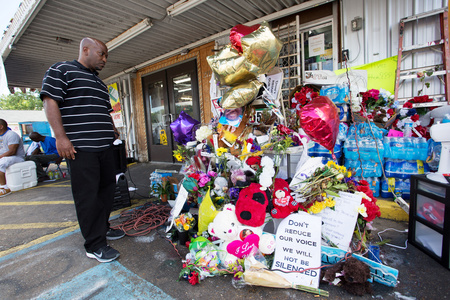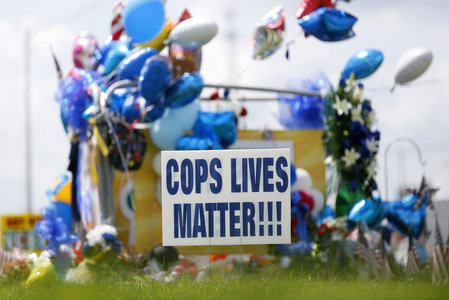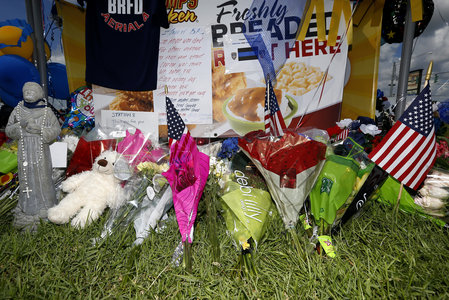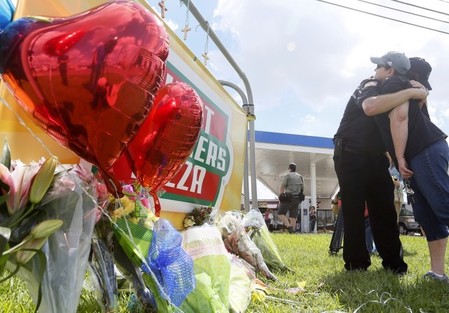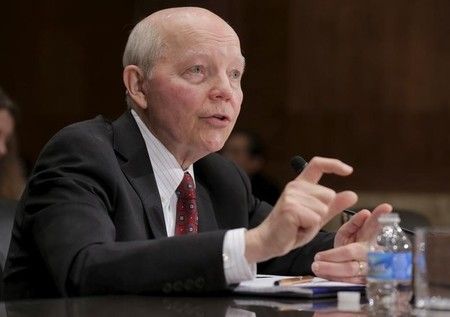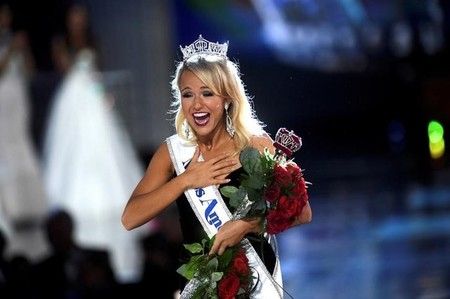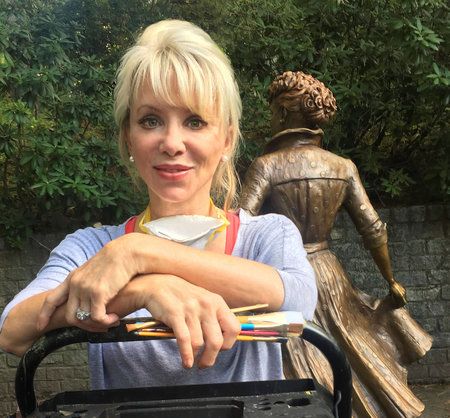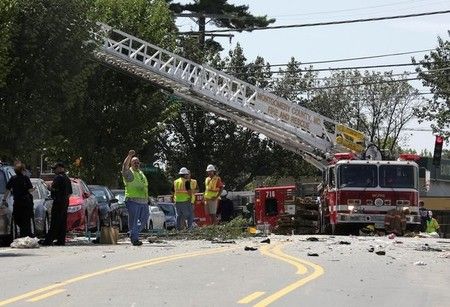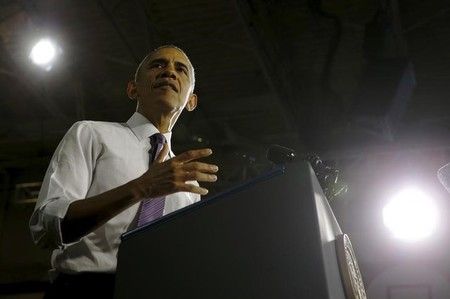Advertisement
Differences abide in Baton Rouge after moment of shared sorrow
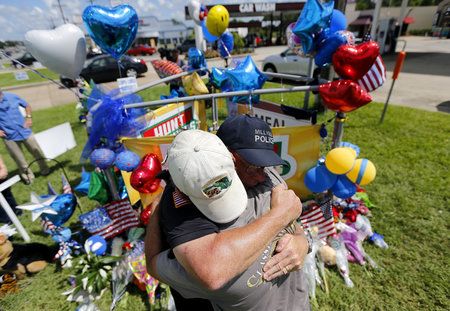
By Andy Sullivan and Sam Karlin
BATON ROUGE, La. (Reuters) – On the affluent south side of Baton Rouge, a clutch of plastic balloons bobs in front of the gas station where an ex-U.S. Marine shot dead three police officers.
On the impoverished north side, a pile of flowers and a spray-painted portrait mark the spot where black resident Alton Sterling was killed by police two weeks ago.
The impromptu shrines in Louisiana’s state capital illustrate the heartache on both sides of a confrontation over police use of lethal force against mostly black men and targeted killings in Dallas and Baton Rouge by black gunmen bearing racial grievances against white officers.
The differences between law enforcement and activists who have protested a series of police-involved shootings across the United States in the past two years seemed briefly to have been set aside in Baton Rouge in the immediate aftermath of Sunday’s murders that officials described as assassinations.
Public safety officials and civil rights leaders alike denounced the killer, identified as 29-year-old Gavin Long of Kansas City, Missouri, as a visitor without ties to Baton Rouge who came to their city with intent to do harm.
“People on all sides, people who were peacefully protesting the Sterling incident, are just as heartbroken over this as everyone in the law enforcement community,” said State Representative Barry Ivey, a Republican who represents Baton Rouge.
But some black residents worried the ambush could shift attention away from Sterling’s July 5 death, which many saw as just the latest example of heavy-handed policing.
“How many more innocent people have to be killed before they bring those two officers to justice?” asked Quenton Williams, who described his own struggles with the court system as visitors took photos and laid flowers in front of the ramshackle convenience store where Sterling was killed.
Civil rights leaders said they would continue to press for police reforms, even as they urged frustrated residents to refrain from street protests.
“Just getting a crowd begets tension in and of itself,” said the Reverend Lee Wesley, a leader of an interfaith group called Together Baton Rouge.
The Baton Rouge police department faces a federal investigation over Sterling’s death, and is still operating under a decades-old agreement with the U.S. government to hire more black officers.
PROTESTS PETERED OUT
Residents said their city had been returning to normal before the killing of the officers, two white and one black.
The protests following Sterling’s death had petered out and police had not made any arrests for reasons of civil unrest for six days, officials said.
But even as Sunday’s attack prompted an outpouring of goodwill from locals determined to try to use it to soothe long-standing racial tensions, there were signs it may have hardened others’ positions in the debate over police conduct.
An emotional Baton Rouge Police Chief Carl Dabadie said the military-style tactics that are criticized by activists made it possible for Long to be shot dead from 100 yards away before he could kill more police officers.
“We are up against a force that is not playing by the rules. They didn’t play by the rules in Dallas, they didn’t play by the rules here,” Dabadie said.
In Dallas on July 7, five police officers were killed near the scene of a peaceful demonstration by a black former U.S. Army reservist, Micah Johnson.
Maxine Crump, executive director of Dialogue on Race Louisiana, said that since Sunday’s attack she has been “inundated” with offers from people wanting to be part of discussions on how to improve race relations.
“I do not think this has set us back,” Crump said.
Some believe progress is unlikely to be made anytime soon.
“We won’t heal this in a week or a month,” said State Senator Mack “Bodi” White, a Republican running for mayor this year.
(Additional reporting by Sam Karlin; Writing by Andy Sullivan; editing by Daniel Wallis and Grant McCool)


